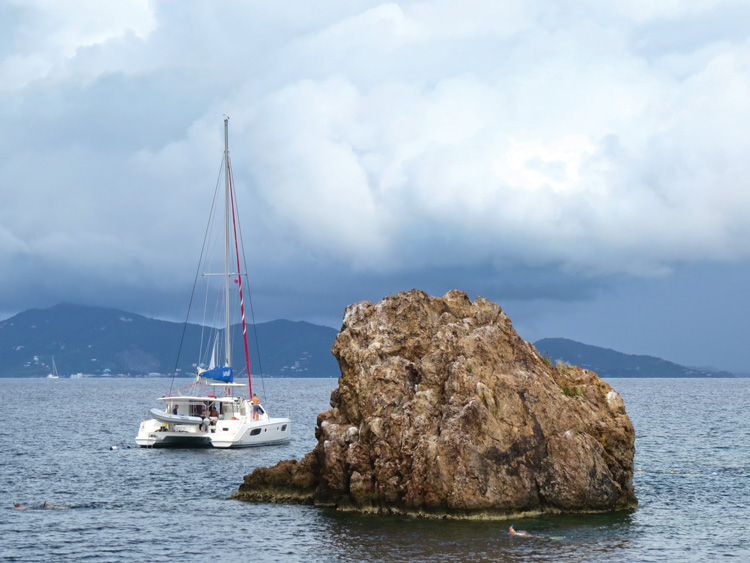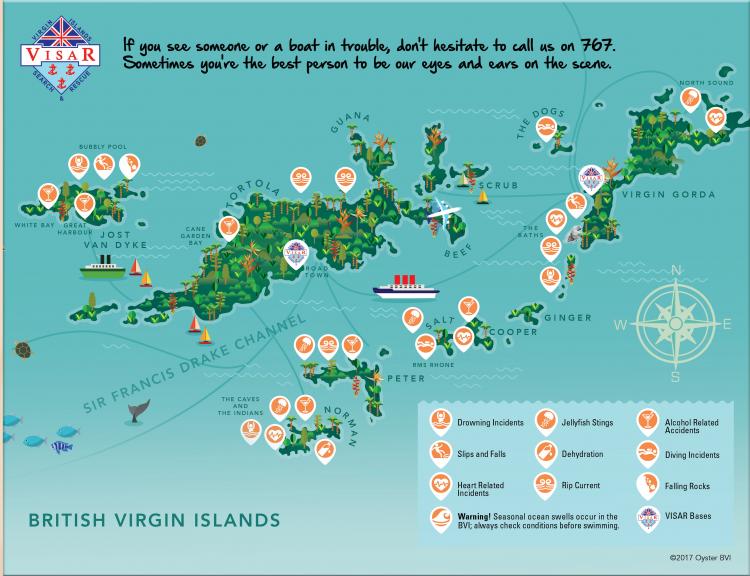Crew Needs to Know What To Do If There is an Emergency Aboard
Whether out for a day or a week, a charter crew needs to know what to do if there is an emergency aboard. If you’re the captain, be sure to review the location and proper use of the equipment below so that everyone aboard stays safe and can be a positive contributor in an unexpected situation. Reviewing a few possible emergency scenarios will also lead to better reactions if and when the time comes.

1. Lifejackets
Make sure everyone aboard knows where the lifejackets are stored and how to put them on. As captain, you should make sure you have enough for all aboard and that the jackets are in good condition. If you have kids aboard, you’ll need to have special sizes. Remember that all kids 12 and under need to wear a personal lifesaving device while on a moving vessel.
2. Fire Extinguishers
Locate and discuss the correct use of fire extinguishers. Be sure to find every extinguisher aboard, check that it’s full, and discuss how to use one: pull the pin and aim at the base of the flames. Just about everyone has seen a fire extinguisher but many are completely clueless as to what to do with one. Often times on charter, extinguishers are either uninspected or tossed into lockers and hidden by other equipment. Lay eyes on all the extinguishers your equipment list says you should have before departure.

3. VHF Radio
Everyone, including kids, should know how to use the VHF to call for help if necessary. They should understand that hailing and distress calls are done on channel 16, how to change channels, and how to transmit and receive. They should also know that the VHF is not a toy and that you can be fined if someone aboard is playing on the radio. Make sure your VHF transmits as well as receives by calling the charter office before departure.
4. Medical Kit
Locate the medical kit and inspect its contents. Most charter kits are woefully understocked and often contain items in poor condition and medications that are expired. Nevertheless, find the kit, discuss with the crew what’s in it, and if you brought supplementary items, share the location of those as well.
5. Galley Stove
There may be multiple cooks aboard, so walk through the proper procedure for use of the stove/oven. Locate the solenoid (if there is one), demonstrate how to light the stove/oven, and discuss how to manage a fire—e.g. don’t throw water on a grease fire.
6. Head Use
Yes, knowing how to use the heads is a safety tip for two reasons. First, you want to make sure improper use doesn’t cause breakage or flooding. Second, when underway, it’s best to use the head quickly since a prolonged stay in a small and enclosed space may lead to seasickness. Demonstrate the use of both electric and manual heads and discuss what to do/not do with toilet paper and other items that may find their way into the bowl. If you allow paper to be put into the toilet, be prepared for a clogged head.
7. Emergency Procedures
You can’t prepare for everything but a group discussion of what to do in case of a particular emergency could mean the difference between a small problem and a catastrophe.
- Man Overboard - Discuss the value of keeping calm and designating a watch person who never takes his/her eyes off the man overboard (MOB). Review how to stop the boat and return to the MOB, and how to get them back aboard. Determine who in your group doesn’t swim, and keep an eye on them underway or even at anchor.
- Engine Issues - Review the importance of keeping away from hot engine and genset exhaust water and propeller(s) when swimming, and what to do in case of engine failure during a critical maneuver like docking—e.g. never use hands and feet as fenders.
- Anchoring - Determine who will be working with the windlass when anchoring and show its proper use—e.g. keep hands, hair, and clothing away from the gypsy and chain. Also discuss what to do in case you drag anchor or need to sit anchor watches at night.
- Collision - Whether the boat hits a dock, a rock, or another vessel, a quick discussion in advance of what to do/not do may lessen panic and potentially help with reaction times to prevent a major issue.
An informed crew is a safe crew, and communication is key in any emergency. An hour-long discussion on what to expect and do in various scenarios will be time well spent before you untie the dock line on your charter vacation.
Find more charter articles at spinsheet.com/charter
Find more information about boater safety at spinsheet.com/category/safety
Article By Zuzana Prochazka




